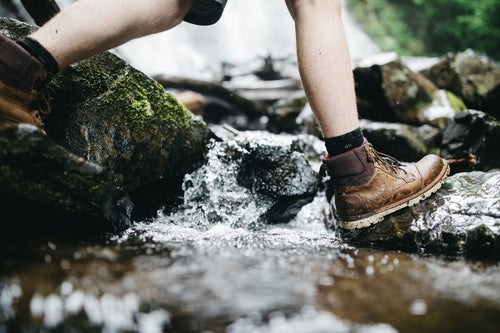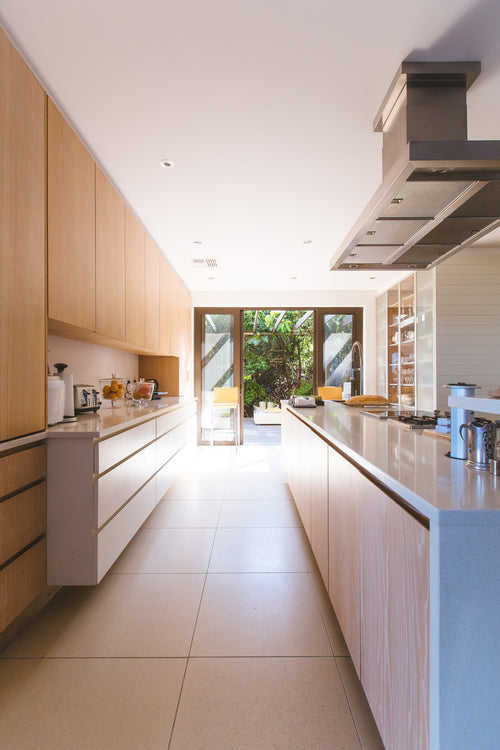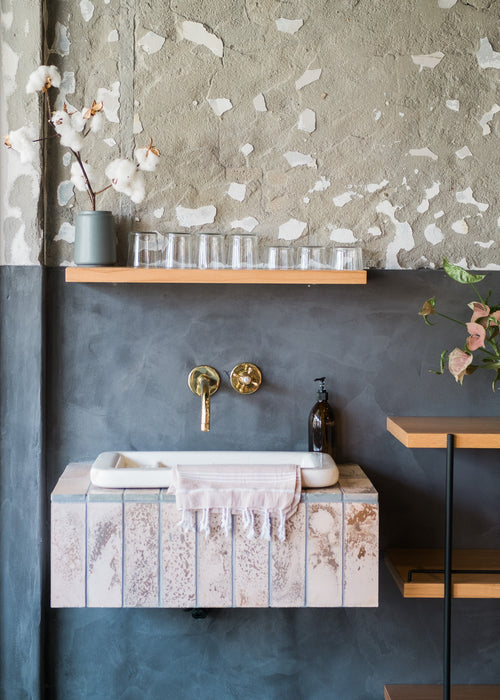PROTECTING STAINLESS STEEL SURFACES FROM TREATED WATER

Depending on where you live, you may have to deal with the problem of hard water. Hard water can be a problem for a variety of reasons, and if you’re not careful, you can end up with issues that cost both time and money to fix as a result.
If you do have hard water, then you’ll need to understand why it’s a problem, the pros and cons of getting your water treated, and what you can to deal with the aftermath of hard water on your stainless steel sinks and appliances. Here’s what you need to know.
WHAT IS HARD WATER?
What is hard water? The simple definition is that hard water is water that has a higher-than-usual concentration of minerals in it, most commonly calcium and magnesium. The hardness of the water increases with higher levels of these minerals.
Hard water can cause a variety of problems with your plumbing and appliances, and it can also impact the appearance of stainless steel surfaces in your home. The top signs that you have hard water are:
-
Spots and stains on your dishes when you take them out of the dishwasher or wash them in the sink.
-
Clothing that looks dingy or has a scratch feel after you wash it.
-
White film that appears on surfaces that come into contact with water, particularly stainless steel sinks, shower doors, bathtubs, and faucets.
-
Hair that has a dull or even sticky appearance after you wash it.
-
Pipes that clog frequently.
-
Appliances that have a shorter lifespan than they should.
-
Skin irritations, including dry, itchy patches or eczema.
Some of the problems caused by hard water are cosmetic, while other can impact your family’s health and your wallet.
WHAT ARE THE TREATMENT OPTIONS FOR HARD WATER?
There are two basic ways you can deal with hard water.
-
Add a softener to your water. Many commercially available softeners add sodium ions to water to soften it and reduce the effect of dissolved calcium and magnesium. For people who have an issue with sodium, there are some hard water treatments that use potassium ions instead.
-
Use a mechanical softener. Mechanical softeners work by using magnets to draw dissolved minerals out of your water. Magnetized softeners are the most affordable option if you want to treat your water.
The option you choose is likely to depend upon the hardness of your water and your budget.
PROS AND CONS OF WATER TREATMENT
Should you treat your hard water? Here are some pros and cons to consider, starting with the pros.
-
Softened water won’t leave chalky deposits on your sink, shower and other surfaces.
-
You’ll use less detergent and soap with softened water than you do with hard water.
-
Your appliances and pipes won’t experience a build-up of minerals that can shorten their life and lead to expensive repairs and replacements.
There are a few potential cons to consider as well:
-
Choosing a softening system that uses sodium ions may result in an increased intake of sodium.
-
Soft water doesn’t taste as good as untreated water.
-
Soft water may leach heavy metals, including lead, from your pipes.
-
Some water softening systems waste up to 10% or more of the water delivered to them during the softening process.
The takeaway here is that you may want to invest in a water treatment system if your water is hard enough to be impacting your family’s health and wellbeing.
HOW TO REMOVE HARD WATER RESIDUE FROM STAINLESS STEEL
What if you have hard water and you’re not prepared to pay for a water treatment system? The good news is that there is something you can do to remove water stains from your stainless steel surfaces.
The key is to find a product that will shield your stainless steel surfaces from the effects of hard water. The best product to use is one that is odor-free, non-toxic, and safe for use around children and pets. You don’t want toxic chemicals in your sink or anywhere near the food you prepare.
CONCLUSION
If you have hard water in your home, it’s important to seal your stainless steel surfaces to prevent water stains and chalky build-up. Choosing a safe, non-toxic sealing product is your best bet to minimize damage and keep your stainless steel looking like new.



